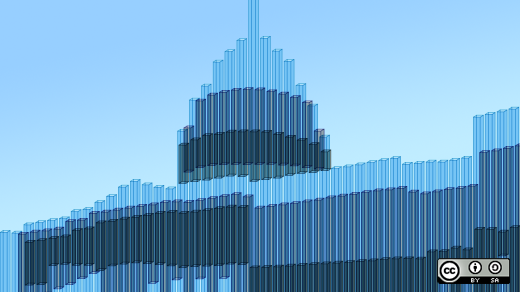Cable Green, director of learning at Creative Commons, gave the final morning's opening keynote at the 2011 Open Education Conference on the seeming obviousness of open policy as a necessity for education.
"I'm interested in the policies that prevent us from providing an education to anyone in the world who might want one," Green said. That worldwide demand for education outpaces our ability to meet it.
One in seven people on the planet don't get enough food, a fact that led Green to ask whether, if we had a machine that could feed everyone with a marginal cost of zero, and no ill effects to farmers, should we turn on the food machine? The obvious answer seems to be yes--and Green says that while we don't have a food machine, we do have a learning machine. But without policies--open policies--we can't turn it on.
By "open policy," Green means simply that publicly funded resources should be openly licensed. If the public has paid for a resource, it should be freely open and available. Publicly funded educational resources should use a license that allows the public to revise, reuse, remix, and redistribute those materials. To take advantage of the funding that goes into education and research, there must be broad adoption of open policies.
Worldwide, roughly 5% of GDP is spent on education. But how much of that is spent creating courseware or on textbooks? With open policies, more of that money could be available for anyone who chooses to learn.
"There's plenty of public funding to build and maintain the education resources the world needs, and open should become the default, and closed the exception," Green said. Further, he says the bar for an exception should be extremely high. Content is commodity. Core curricula--the content of a class like English 101--do not make an individual university great. It's the other ways that schools support students that do.
Billions of dollars are handed out from governments around the world for scientific research, often with no requirement to share. There are efforts being made to change this. For example, an act being considered in Congress, the Federal Research Public Access Act, would require that research with expenditures over $100 million make the resulting journal articles publicly available within six months. Brazil is working on open legislation that requires government funded education resources be made available under an open license and that resources created by public servants be OER. Poland is also working on legislation for open education.
In English Composition I in Washington state, 55,000 students enroll each year with a $100+ textbook--that's more than $5.5 million every year for a course that is taught at nearly every institution of higher education. That money comes from federal aid (taxpayers), state aid (taxpayers), and student debt, which has passed consumer debt in this country. What if the State of Washington put out an RFP for anyone who could build the best English Composition I textbook, recoup its costs in a single year, invest $100,000/year to keep it updated, and use a Creative Commons license to share it with anyone else. And then what if other states took on the need of other basic courses, sharing them with everyone else? How could the savings be applied?
"We shouldn't attack the existing business models head-on, Green said. "Rather we choose to play by the new rules that we understand." Most of our policymakers exist in that world and think that way, and it's our job to help them think differently. He recommends partnering with legislators who care about the efficient use of tax dollars, saving students money, and increasing the availability of education to improve education with the adoption of open policies. "The only one thing that matters," he said, "is the efficient use of public funds to increase student success and access to quality educational materials. Everything else, including all existing business models, is secondary."
"In the future, the opposite of open isn't closed," Green concluded. "The opposite of open is broken."







3 Comments